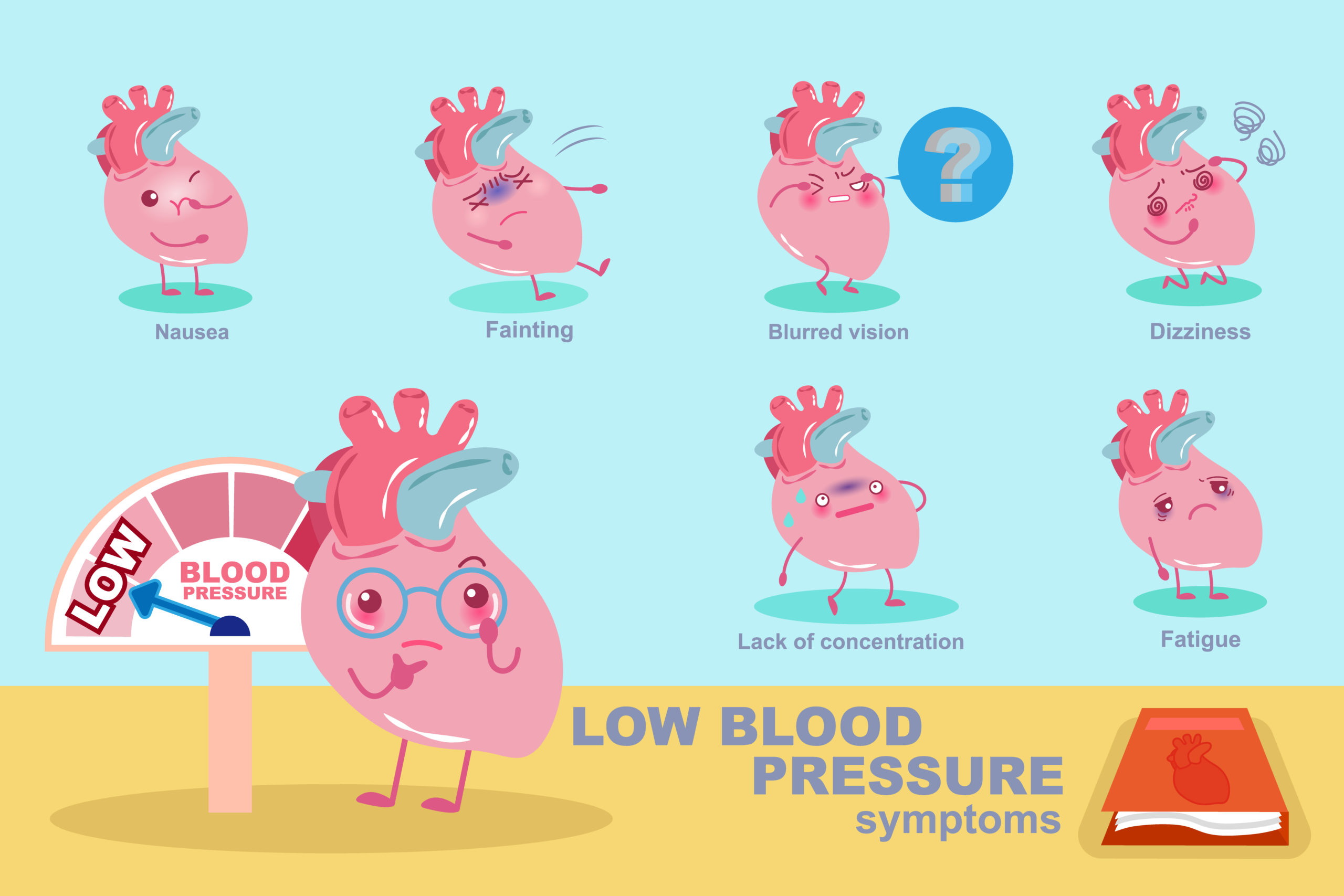Signs and Symptoms of Low Blood Pressure


Introduction
Simply said, blood pressure is the pressure with which the blood flows through your blood vessels. When this pressure of the blood flow decreases beyond a certain level, you are said to be having low blood pressure.
What is Blood Pressure and how is it Measured?
The force of blood (pressure) generated while flowing through the walls of your arteries (the vessels that carry blood from the heart to the organs) is known as blood pressure. Commonly, one measures blood pressure by two values, systolic and diastolic. These values record the blood pressure in millimeters of mercury (mmHg). The systolic values are listed above, and the diastolic below.
A healthy blood pressure, in most individuals, is considered to be less than 120/80 (systolic/diastolic) mmHg and more than 90/60 mmHg. Any reading above this limit is considered high blood pressure, and below this limit is low blood pressure.
What are the Most Common Symptoms and Signs of Low Blood Pressure (Hypotension)?
Among the various conditions people may experience, these are the most frequently observed symptoms of low blood pressure (hypotension):
- Fatigue. Fatigue is a general overall feeling of tiredness and lack of energy.
- Lightheadedness. It is the feeling that you might faint and that feeling that you are not getting enough blood in your head which feels light. It is one of the clearest symptoms of low blood pressure. Lightheadedness may be accompanied by clouded vision and dizziness, which increases the chance of a fall. Necessary precautions should be taken to prevent falls.
- Dizziness. Dizziness is often accompanied by and is very closely related to lightheadedness. It might lead to fainting due to a loss of balance.
- Nausea. Nausea is uneasiness in the stomach with a feeling to vomit. Nausea is usually succeeded by throwing up the contents of the stomach. Once nausea subsides, dehydration should be minimized by rehydrating.
- Clammy skin. It means skin wet and sweaty skin.
- Unconsciousness.
- Blurred vision.
When Should I Visit the Doctor?
Most low bp symptoms like dizziness or low blood pressure do not pose a serious threat when experienced individually and on rare occasions. However, if you have low blood pressure symptoms, they should be recorded and reported to a medical expert.
What Causes Low Blood Pressure?
The causes of low blood pressure are as follows:
- Orthostatic hypotension. Postural hypotension or orthostatic is a form of low blood pressure that happens when standing up from a sitting or lying position.
- Pregnancy. Pregnancy causes a rapid expansion of the circulatory system, leading to a drop in blood pressure. Normal blood pressure levels restore after giving birth.
- Heart problems. Bradycardia (low heart rate) due to problems with the heart’s valves, heart attack, and heart failure can lead to low blood pressure.
- Excessive dehydration. Dehydration, as the term suggests, is the condition when your body loses water than it has taken in. It can lead to weakness, fatigue, and dizziness.
- Medicines. Many drugs can increase the chances of developing low blood pressure, especially in patients who are taking antihypertensive medicines.
- Excessive blood loss. When you have excessive blood loss due to an injury or internal bleeding, the lost amount of blood causes a severe drop in blood pressure.
- Imbalanced diet. An absence or deficiency of vitamin B-12, folate, and iron in the daily diet can result in anemia (a reduced count of red blood cells), leading to low blood pressure.
How can these Hypotension Symptoms be Prevented?
If low blood pressure is expected, it is suggested to try some simple ways to prevent symptoms like dizziness.
- Increase water intake
- Reduce or completely avoid alcohol consumption
- Limit or avoid caffeine
In case you feel dizzy or lightheaded:
- Lie down for a few minutes
- Sit down and put your head between the knees
This will help your blood pressure go back to normal and help your symptoms go away.
Conclusion
Hypotension, which is low blood pressure, can be easily managed and prevented by being educated about the condition. Be aware of the triggers and avoid them. Healthy eating habits, regular hydration, and exercising always help keep the blood pressure in check.
It is best to never neglect any discomfort or symptoms and report them to your doctor at the earliest.
Frequently Asked Questions
Are low blood sugar and low blood pressure the same?
They are not the same, but a low blood sugar level can lead to low blood pressure.
What are some lifestyle changes that can be made to prevent low blood pressure?
Break down your meals to multiple small sized ones – low in carbs – instead of three main meals.
What are the risk factors of low blood pressure?
Older age, medication, and certain diseases like Parkinson’s and other heart conditions make people more vulnerable to low blood pressure.
© Copyright 2024. Apollo Hospitals Group. All Rights Reserved.
 +91 8069991061
Book Health Check-up
Book Health Check-up
Book Appointment
Book Appointment
+91 8069991061
Book Health Check-up
Book Health Check-up
Book Appointment
Book Appointment







